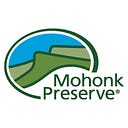Research Report #23— American Chestnut: 1984 Status in the Shawangunks
For many years scientists and naturalists have been studying and observing the flora and fauna of the Shawangunk Ridge. Foremost among them was Daniel Smiley, for whom Mohonk Preserve’s Daniel Smiley Research Center is named. Dan wrote numerous reports summarizing his observations on various topics. This regularly occurring series will feature some of these reports; some hold tremendous scientific value today and just await an interested researcher to follow up, others showcase a quirky sense of humor or highlight an oddity of nature.
Read the report: American Chestnut: 1984 Status in the Shawangunks. April, 1985. Paul C. Huth and Daniel Smiley.
A note from Paul C. Huth, Director of Research Emeritus:
It is hard to believe that a little over a hundred years ago, American Chestnut was one of the dominant deciduous trees in Mohonk Preserve and Shawangunk forests. Mohonk Preserve Research Associate Dr. Emily W.B. Russell found it “was the fourth most common tree species in the precolonial forest….” Its reliable annual production of nuts provided a staple food source prehistorically for Native Americans, as well as for settlers and their domestic stock, especially on Shawangunk Mountain “scratch” farms. In the wild, American Chestnuts provided the yearly abundance of food on the forest floor for a wide diversity of wildlife, including both birds and mammals. It’s wood was the choice for commercial and home use.
Although a lot is known and has been presented about the major loss of American Chestnuts due to an imported fungus blight, Cryphonectria parasitica, we wanted to document first hand the spread of the disease at Mohonk and present baseline studies which included data from growth study plots and documentation of the largest trees we knew of in the Shawangunks.
The blight was first identified in the New York City area (New York Zoological Garden) in 1904. By September, 1912, the blight was already firmly established in the Mohonk area. In June, 1913, the Smiley Family at Mohonk noted “….Chestnut trees all over the mountain dying….” In a study of vegetational history over seventy years later, increment cores of oaks and hemlocks in the area of a former American Chestnut stand, as remembered by co-author Daniel Smiley from his youth, revealed an increasing annual rate of growth starting in 1915, due to the opening of the canopy from the death of American Chestnut trees.
Fortunately, the Chestnut blight does not directly kill the root crowns and root system of American Chestnut. The tree is also a vigorous sprouter from the root crown or collar, thus when the latest stem is eventually killed by the blight, others are stimulated to grow utilizing the stored energy in the extent root system. In our report, we documented 23 American Chestnut trees 4.0 inches or larger in diameter. The largest was 8.6 inches, and the tallest estimated at 50 feet tall. The oldest was 41 years. We clearly noticed that at an increasing level, Deer browse on root crown sprouts was keeping new stems from reaching small tree and pole size. In fact, some repeated Deer browse was so intense over several growing seasons that the root crowns themselves died.
We became curious over many years of observation that not all American Chestnut sprouts seemed to be growing from an obvious ancestral root collar dating back to an original preblight forest tree. In fact, field work in Massachusetts was showing that there was an American Chestnut forest shrub stage, and that some sprouts found today could “be related to ‘seedlings established on the forest floor prior’ to the introduction of the blight and not to canopy trees.” We related this to what we find in mature Chestnut Oak and Red Oak forests, where abundant seedlings are found on the forest floor, sometimes confined as shrubs for many decades by competition, canopy shade, and in recent decades, Deer browse.
Read the report: American Chestnut: 1984 Status in the Shawangunks. April, 1985. Paul C. Huth and Daniel Smiley.
